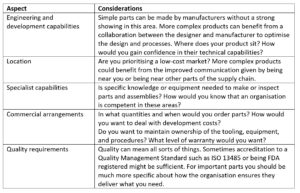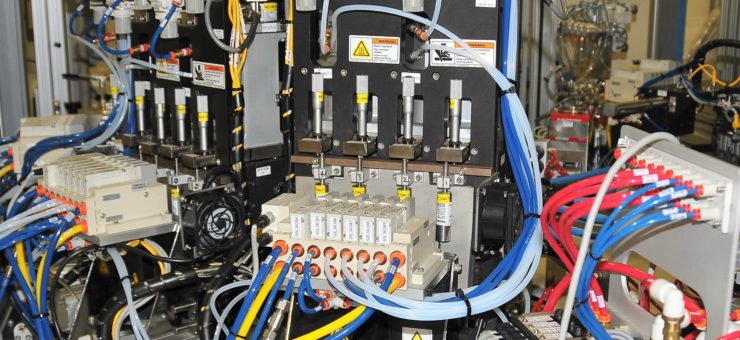Transfer to manufacture: selecting a partner
1 February 2023
It is a nightmare scenario: you have a great product and commercial opportunity, but you are going to be late to launch because of delays in the transfer to manufacture. It is stressful, the boss is hounding you, and your focus is stolen away from all the other important things you need to be doing. If this sounds like you, or you are worried it might be you, you are not alone. Transferring your design is a daunting task and any misstep causes del ays and increased costs. Moving a design into production crosses boundaries between teams and often between companies. Navigating these boundaries is tricky and without careful planning it can result in a loss of know-how and a fruitless blame game when things go wrong.
So how do you avoid this situation? Planning for production early in the development process supports a smooth transition to production and choosing the right production partner is a critical part of this process. Here we lay out the most important considerations for selecting a manufacturing partner to ensure the best chance of success.
Define requirements
Firstly, define what is important to your product and strategy. A procurement department might have rigid ideas about what makes a good manufacturing partner, e.g., cost, timing, supply chain integration, and quality (whatever that may mean). There will be numerous other factors that are important, and input should come from all the stakeholders in the product. Some examples are:

Other considerations might include: experience within your product area, project leadership capabilities, the type and quality of documentation produced, if and how sub-suppliers are used.
Shortlist potential suppliers
Once you have your requirements, prepare a shortlist of potential suppliers. Consider existing and new suppliers and look for a broad range of skillsets, but make the list only as long as is worthwhile for the part or assembly. Collate your requirements and product information into a briefing pack and share it with the suppliers.
Narrow down the field
After you have had initial discussions, visit the interesting suppliers early. The time spent doing this upfront will pay back many times over later. Seeing people and facilities in person gives you a chance to look beyond what they choose to show you. Who you deal with, and how, can tell you a lot about what the future relationship will be like. You want to see buy-in from management and get a transparent look at how your product would move through their processes and facility. Speak with operators to get confidence that they know what they are doing. If you never deal with the same people twice or don’t get to see a particular area, alarm bells should be ringing.
Once suppliers start providing you with feedback, take it on board humbly and respectfully. Remember that they are the experts in what they do and will likely have good reasons for their suggestions. Have constructive conversations to understand what the best outcome will be for the product – both parties have a stake in it being a success!
To help you make a decision your job is to find weaknesses as soon as possible. Everyone has weaknesses; this is inevitable. Identifying them quickly allows you to mitigate them successfully and direct resources appropriately. Useful areas to probe might be:
- Are the facilities well-established or new?
- Can they sensibly identify risks and back up plans?
- What historical problems have they had?
- How would they move from pilot to production processes?
Use your list of requirements to create a checklist to score the suppliers on your shortlist. This helps you keep an objective perspective of the situation and ensures you are getting a complete picture from each potential partner. But remember that such scoring exercises are a useful tool, not a dictator. At this point it is likely time to conduct audits to cover aspects of engineering, purchasing, quality and project management. Leads in these areas should be the stakeholders involved in the decision to select a partner.
Make a decision
The stakeholders should analyse the responses from the contenders. The risks of each option should be considered, and it might be useful to do a risk assessment looking at both sides of the relationship. Again, there will always be risks but this exercise can help you identify where you can focus your support and where you can get the supplier to commit to working on improvements. At this stage, make sure the conditions of a partnership are agreed. Once a decision has been made, communicate it to the relevant parties, internally and externally. Explain the reasons for your decision to the successful and unsuccessful partners. Those who didn’t get the job will hopefully appreciate the honest feedback. Remember that they might be your contingency partner.
Review
Once the necessary paperwork is in place, the real work starts. Don’t disappear and assume that everything will run smoothly. You need to be checking that:
- The supplier is following their plan and adhering to the agreed conditions
- You are upholding your obligations in supporting the transfer
- Your risk assessment is kept up to date to reflect the unfolding reality
- Issues are identified early, and sensible contingency plans are being made and followed up
Written by: Thom Wyatt, Principle Engineer, Springboard, and published in MedTech News.
Contact us to find out how we can help.


